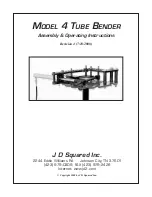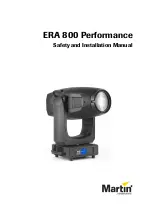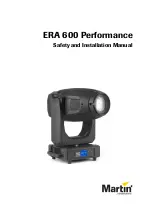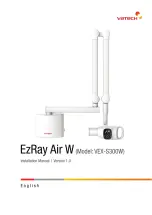
LEDJ Intense 19T3 RGB LED Slim Panel
DMX Set up
DATA Cable (DMX cable) requirements (for DMX operation):
• The Intense Series can be controlled via DMX-512 protocol. The DMX address can be set on the
back of the fixture. Your fixture and your DMX controller require a standard 3-pin XLR
connector for data input/output (figure 1).
Figure 1
Also remember that DMX cable must be daisy chained and cannot be split.
Notice:
• Be sure to follow figures 2 & 3 when making your own cables. Do not connect the cable’s shield
conductor to the ground lug or allow the shield conductor to come in contact with the XLR’s outer
casing. Grounding the shield could cause a short circuit and erratic behaviour.
Special Note: Line termination:
• When longer runs of cable are used, you may need to use a terminator on the last unit to
avoid erratic behaviour.
Using a cable terminator (part number CABL90 3-pin, CABL89 5-pin) will decrease the
possibilities of erratic behaviour.
5-Pin XLR DMX Connectors:
• Some manufactures use 5-pin XLR connectors for data transmission in place of 3-pin. 5-Pin
XLR fixtures may be implemented in a 3-pin XLR DMX line. When inserting standard 5-pin
XLR connectors in to a 3-pin line a cable adaptor must be used. The Chart below details the
correct cable conversion.
Termination reduces signal transmission problems
and interferance. it is always advisable to connect a
DMX terminal, (resistance 120 Ohm 1/4 W) between
pin 2 (DMX-) and pin 3 (DMX+) of the last fixture.





























